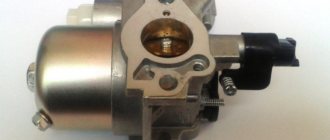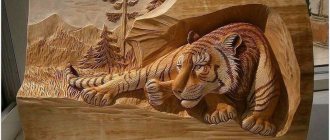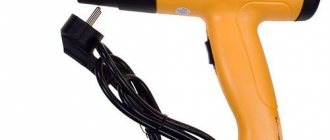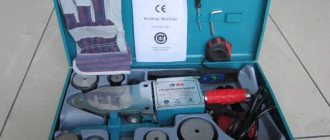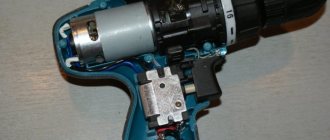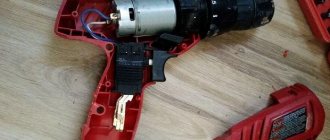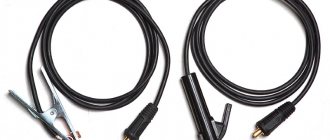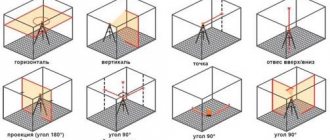The subtleties of good soldering
To solder a part to the board, you need:
1) Apply flux to the soldering surface; 2) Tin them with solder; 3) Apply flux to the contacts again; 4) Solder the gap between the contacts.
The first important rule is to avoid temperatures above 400°C or more. Many beginner (and even experienced) radio amateurs neglect this. These are critical values for microcircuits and boards.
Solder melts at approximately 180 to 230°C (lead-containing solders) or 180 to 250°C (lead-free). This is far from 400 °C. Why then set the temperature high?
What you need for reliable contact
Main criteria:
- Choose the right flux. For example, liquid flux is suitable for soldering wires. It wets wires best and allows for better tinning of such contacts. Low-quality flux quickly boils and spreads over the board.
- Use high quality solder. It is the solder that determines the further reliability and strength of the connection. Also, the quality of the solder can affect the operation of the circuit as a whole; due to slag and low-quality alloys, interference may occur in the operation of the electronics and, over time, cracks may appear.
- Use proven tools and equipment. Soldering irons of poor quality can maintain temperature unstably and overheat.
- Maintain temperature conditions. Do not overheat the parts and stay within the melting temperature of the solder. The temperature is too low and the solder will not melt well, and if it is too high, the material will evaporate, making it worse to tin the contacts.
- Long hours of practice, trial and error. Without practice, there will be no soldering method.
These criteria are interrelated with each other. And with a poor choice of components and materials, the same result will occur.
How to solder circuit conductors with a hand soldering iron?
The soldering procedure aimed at connecting wires is somewhat different from soldering on electronic board tracks.
It should be noted: only copper conductors or those built on alloys with a high copper content can be soldered with tin solder using rosin and similar fluxes.
How to solder wires with a hand soldering iron - correct tinning and correct contact time. The quality largely depends on the composition of the conductor strands being soldered. Initially, it is necessary to prepare the ends of the conductors for soldering - strip them to a characteristic shine and twist them tightly (multi-core). Then:
- The prepared end of the conductor is inserted together with the soldering iron tip briefly into the rosin.
- Next, grab the solder with a tip and apply it to the stripped end of the conductor, covered with a thin layer of rosin.
- Distribute the solder evenly with the tip until the entire area of the end of the conductor is completely covered.
When performing the last point, you should control the process so as not to overheat the wire insulation.
If the insulation begins to melt, you should remove the soldering iron for a while and repeat tinning a little later. Do a similar procedure with the other wire. Then place the ends one on top of the other and fill with solder.
You can also use another option:
- Clean the ends of the conductors until they are shiny.
- Twist the ends together.
- Dip briefly into melted rosin.
- Tin and fill with solder.
Where to begin
First, you need to decide for what purpose you need soldering. For amateur radio, this is an entry-level level; for soldering wiring and a simple level, more professional tools are needed. And to repair and solder SMD and BGA microcircuits, you will have to learn all the basics of soldering and purchase special tools and consumables.
Choosing the Right Soldering Kit
Solders come in different types and diameters.
A large solder diameter is convenient for soldering wires, and small diameters are suitable for spot soldering SMD components or connectors. Solders also come with or without rosin. With rosin, solder is very convenient. It is easiest to use it on a soldering iron tip.
Starter Kit
For radio amateurs, stores sell everything at once in one pack. Such sets are the cheapest, since everything will cost more separately. For example, there are sets with a soldering iron and tips, as well as tweezers.
Soldering iron or station
For soldering radio components and wires, a simple soldering iron with a copper tip is sufficient. But for more advanced soldering you will need a station. A soldering station usually consists of a hair dryer and a soldering iron. Using a hair dryer, you can solder SMD components, and you will be able to warm up the board better.
It is best to start with a soldering iron and choose one that has temperature control and changeable tips.
Soldering iron tips
There is an arsenal of tips for soldering irons. Cone, flat, hatchet, wave, etc. They can all be of different sizes and shapes.
Soldering tip selection
A mini wave is perfect for beginners. This type of tip is the easiest to tin and is capable of a wide range of tasks.
Features of application
For soldering wires these are massive tips, and for planar contacts these are usually conical and curved tips. For example, to solder a cable from a board, a hatchet is best suited. This type has a wide working surface, which allows you to massively heat a large surface of the board.
Eternal stings and rules for their use
The main rule when using permanent tips is that there should always be solder or flux on the tip. If you ignore this rule, black dots will begin to appear on the sting, which will eventually spread to the entire surface.
This is a layer of soot that forms when air oxidizes on the working surface. Solder or flux perform a protective function, and during operation of the soldering iron they, and not the soldering iron tip, are oxidized.
Why did the soldering iron start to solder poorly?
If the soldering iron melts the solder, but does not take it to its working surface, then it needs to be tinned. It is highly oxidized, but should not be thrown away.
Preparing for work
After turning on the soldering iron, you need to wait for it to heat up. All preparation comes down to cleaning carbon deposits from the working surface and applying solder. When working with stings, do not use cutting tools. Do not remove carbon deposits from the soldering iron with blades or other sharp objects.
Soldering iron tinning
Tinning a soldering iron occurs in stages:
- The heated tip needs to be cleaned. Using a wet sponge or copper shavings.
- Solder was applied to a clean surface.
The black surface of the tip is removed by long tinning. This is done using a lump of solder and flux. The tip is drowned in solder until it is clean. Periodically it should be dipped in solder. And then clean again with a sponge. In this case, it is best to use copper shavings; they remove oxides and carbon deposits much better. A wet sponge only removes solder, not carbon deposits. If the above methods do not help, then you will have to use a tip activator or soldering acid.
Hair dryer nozzles
The soldering gun also has its own attachments. They come in different diameters, shapes and fastenings. It all depends on what kind of work is being done.
Soldering flux selection
Soldering work has a wide range. And different tasks require different materials. For example, for soldering wires, nothing beats regular rosin. Rosin is cheap, practical and easy to use. But for microcircuits a different approach is needed. Paste-like flux and syringe for precise dosing of flux to SMD components.
How to clean flux after soldering
Using Galosh gasoline or alcohol.
Tools and consumables for cleaning:
- Cotton wool;
- Cotton pads;
- Cotton sticks;
- Toothbrush.
Workplace and additional tools
A wooden table is suitable for the workplace. If you don’t want to spoil the surface of the table, you can use a wooden plank. Wood absorbs little heat and does not act as a radiator. And if you don’t have such a board, you can purchase a silicone heat-resistant mat. This mat has a convenient area for disassembling electronics, various pockets and places for tools. The mat can be cleaned with regular alcohol after use if there are any stains or traces of solder.
Tweezers and spatulas
Using tweezers, you can move parts when soldering, position and install parts. They are also made from different materials, they can be angular, straight, with fixation, etc.
Optics and microscopes
Magnifiers are not very convenient, so it is much more convenient and practical to use microscopes. It's best to start with a budget option. For example, a simple USB microscope will allow you to evaluate the result of soldering on a computer screen.
Of course, the frame rate does not allow you to work normally under it, but it allows you to examine small details of the board without harm to your eyesight.
Room ventilation and safety rules
The room must have good ventilation. When soldering, you need to keep your distance and not get too close to avoid solder getting on your face. After soldering work, be sure to ventilate the room and wash your hands and face with soap. You should not eat food while soldering, because smoke residues remain on mucous surfaces.
Fluxing or tinning
The traditional and most affordable flux is rosin. If desired, you can solder with a solid substance or its alcohol solution (SKF, Rosin-gel, etc.), as well as TAGS flux.
The legs of radio components or chips are covered with half-milk at the factory. But to get rid of oxides, you can tin them again before installation, lubricating them with liquid flux and covering them with an even layer of molten solder.
Before processing with flux or tinning, copper wire is cleaned with fine emery cloth. This removes the oxide layer or enamel insulation. Liquid flux is applied with a brush, and then the soldering area is heated with a soldering iron and covered with a thin layer of tin. Tinning in solid rosin is done as follows:
- melt a piece of the substance on a stand and heat the conductor in it;
- feed the solder rod and distribute the molten metal evenly over the wire.
Correctly soldering massive copper, bronze or steel parts should be done using active fluxes that contain acids (F-34A, Glycerin-hydrazine, etc.). They will help create an even layer of poluda and firmly connect parts of large objects. Tin is applied to large surfaces with a soldering iron, spreading solder evenly over them. After working with active flux, acid residues should be neutralized with an alkaline solution (for example, soda).
Simple soldering of wires
The first example is soldering wires.
What you need
To strip the insulation from the wires you will need a stripper.
It can be used to quickly remove insulation. Side cutters, wire cutters, a knife, teeth or a soldering iron will not be able to cope with this task as easily.
Liquid rosin, or FKET, is suitable for soldering wires.
Liquid rosin best coats the wire veins. It is cheap, practical and convenient.
Which sting is better to choose
Wires require a lot of solder. A mini wave is more practical for soldering any wires than a regular cone or flat tip.
Step by step process
We remove the insulation with a stripper and twist the wires.
We apply flux to the wires to be soldered, and take the solder onto the tip. The temperature of the tip is no more than 300 °C.
With several movements back and forth we tin the twisted wires. If the solder has formed into lumps, then add it and wait for the soldering area to cool down so as not to damage the brush. Add more flux and run the soldering iron over the soldering area again. There should not be much or little solder.
It's best to tin both wires before soldering them together, but you won't be able to twist them together securely. Therefore, it is easier to immediately twist and then solder them.
Headphone repair
The main problem when repairing headphones is the resistant insulation of the wires.
Features of wire tinning
To tin such wires, you need to carefully walk over the soldering area using solder and rosin.
For soldering you will need a massive tip, a large drop of solder and liquid rosin. Flux is applied in the same way, but soldering is a little different. Now the main task is to burn the insulation. This can be done with a large drop of solder. Using longitudinal movements back and forth, apply solder to the soldering area. Insulation burns slowly. There is no need to raise the temperature above 300 °C or use acid. If we can’t tin, then we try again, but instead of rosin we use LTI-120. This flux will help tin the wires no worse than soldering acid.
Preparing the soldering iron for use
In everyday life, “ordinary” electric soldering irons are used. There are those that operate from 220 V, there are from 380 V, there are from 12 V. The latter are characterized by low power. They are used mainly in enterprises in areas with increased danger. They can also be used for domestic purposes, but they heat up slowly, and the power is not enough...
You need to choose the one that fits comfortably in your hand
Power selection
The power of the soldering iron is selected depending on the nature of the work:
- For working with electronic elements - 40-60 W.
- With a thickness of soldered parts up to 1 mm - 80-100 W.
- Thick-walled elements - with a wall of 2 mm - require power of 100 W and above.
Soldering irons come in different capacities and operate on different voltages.
In a household, it is enough to have two soldering irons - one low-power one - 40-60 W, and one “medium” one - about 100 W. With their help, it will be possible to cover about 85-95% of needs. But it is still better to entrust the soldering of thick-walled parts to a professional - this requires specific experience.
Preparing for work
When the soldering iron is plugged in for the first time, it often starts to smoke. This burns out the lubricants that were used in the production process. When the smoke stops coming out, turn off the soldering iron and wait until it cools down. Next you need to sharpen the tip.
First you need to burn off the grease
Sharpening the tip
Next, you need to prepare the tip for work. It is a cylindrical rod made of copper alloy. It is fixed using a clamping screw, which is located at the very end of the heat chamber. In more expensive models, the tip may be slightly sharpened, but basically there is no sharpening.
How to prepare a soldering iron for use
We will change the very tip of the sting. You can use a hammer (flatten the copper as you need), a file or emery (just grind off the unnecessary). The shape of the tip is chosen depending on the intended type of work. It can be:
- Flatten it into a spatula (like a screwdriver) or make it flat on one side (angled sharpening). This type of sharpening is needed if massive parts will be soldered. This sharpening increases the contact surface and improves heat transfer.
- You can grind the edge of the tip into a sharp cone (pyramid) if you plan to work with small parts (thin wires, electrical parts). This makes it easier to control the degree of heating.
- The same cone, but not so sharp, is suitable for working with conductors of larger diameter.
Sharpening with a “spatula” is considered more universal. If it is formed with a hammer, the copper will be compacted and the tip will need to be adjusted less often. The width of the “shovel” can be made larger or smaller by trimming it on the sides with a file or emery. With this type of sharpening you can work with thin and medium-sized parts to be soldered (rotate the tip to the desired position).
Soldering iron tinning
If the soldering iron tip does not have a protective coating, it must be tinned - covered with a thin layer of tin. This will protect it from corrosion and rapid wear. This is done the first time you turn on the instrument, when the smoke has ceased to be emitted.
The first method of tinning a soldering iron tip:
- bring to operating temperature;
- touch the rosin;
- melt the solder and rub it along the entire tip (you can use a wooden sliver).
Second way. Moisten a rag with a solution of zinc chloride and rub the heated tip on the rag. Melt the solder and rub it with a piece of table rock salt over the entire surface of the tip. In any case, the copper should be covered with a thin layer of tin.
Tinning of enameled wire
Enameled copper wire has a heat capacity and is difficult to tinning.
But it can be easily tinned using ordinary rosin. Sandpaper is enough.
We remove the enamel coating using sandpaper, apply rosin and the wire is successfully crimped and ready for soldering.
Soldering LED strip
The LED strip has the same heat capacity as a thick wire. It contains a copper substrate, which absorbs heat when heated.
We tin the contacts using rosin. We use a mini wave and very little solder. There should be some solder at the soldering area.
Next, we take the soldering iron away from us with the handle, lean the wire against the contact and on top with the tip of the soldering iron. Soldering should take no longer than a second while there is flux. This is due to the fact that the copper substrate quickly absorbs heat, and the burning flux is no longer able to assemble the solder into a single whole. Therefore, if soldering work lasts more than a second, then there will be lumps of solder on the tape with signs of cold contact. If this happens, apply flux again and correct the bad soldering with one touch.
Rosin (flux) can be cleaned from the tape using alcohol (or gasoline) and a cotton pad.
What tools and accessories are used when soldering?
The basis for soldering work is a relatively small number of tools and components:
- Electric (or other) soldering iron.
- Soldering iron stand.
- Solder.
- Flux (the simplest and most popular is rosin).
This is what a simplified version of the hardware and accessories for manual soldering looks like. However, with increasing skills of an electrician and increasing needs for soldering work, it is possible to expand the range when additionally required:
- Soldering Station.
- Device "Third hand".
- Set of solder, fluxes, soldering pastes.
What kind of electric soldering iron is it?
Hand tool - soldering iron, powered from a standard AC outlet (220V). There is a direct power tool and power supply via adapter. There are manual soldering irons for different power (10 - 100 W). However, for most soldering cases, a 25-40 W device is usually sufficient.
Hand-held soldering tool designs come in a variety of shapes and configurations. There are tools supplemented with different tip shapes and auxiliary accessories. The main tool for the soldering process is available in different designs. For example, a simple one with a handle or in the form of a pistol.
The design of most soldering irons supports the interchangeability of soldering tips. Thanks to the mutual replacement of tips, different soldering methods are implemented.
Working with a hand soldering iron requires caution and compliance with operating rules, since a high heating temperature of 450-500ºC and a high supply voltage of 220 V are used.
What is the best stand for an electric soldering iron?
This accessory is optional, but recommended in any case. In principle, soldering can be carried out without a soldering iron stand, but this option is accompanied by a lot of inconvenience. Moreover, it is not recommended for novice electrical installers to work without a stand.
A stand for parking a soldering tool is an accessory that provides not only ease of use and soldering, but also safety for an electrician. Convenient work with a stand is seen not only in parking a soldering iron during work. Usually the stand is equipped with trays for solder and flux, which also adds to the comfort during soldering.
Therefore, if you intend to do soldering work, you should acquire not only a soldering iron, but also a convenient, practical stand.
What solders and fluxes are used?
There are many varieties of solder in relation to soldering conditions. This soldering accessory comes with:
- lead alloy,
- lead-free alloy,
- with the addition of flux,
- without adding flux.
Traditionally, solder is produced in wire form with a diameter of 0.8-15 mm, as well as rods. The wire version is considered the most common.
For soldering electronics, lead-free solder is most often used with or without the addition of rosin. The lead-free type of solder is based on an alloy of tin and copper.
Lead solder (60% tin, 40% lead) is practiced (much less frequently), but this option is considered harmful to health and is not recommended for use.
When using lead solder for soldering with a soldering iron, it is necessary to provide more active ventilation. After completing soldering work, be sure to wash your hands with laundry soap.
Integral accessories for soldering using a hand soldering iron are soldering rosin and wire solder. There are also solder pastes and rod-shaped solders. Working with solder is accompanied by different types of flux. Among the options used, there is a soldering option where acid acts as a flux (soldering steel, stainless steel).
In this case, a separate “acid” soldering iron core is recommended, since the acid quickly “eats” the non-ferrous metal. “Acid” core can be found in specialized stores.
How to solder with a hand soldering iron and clean the tip?
Soldering requires periodic cleaning of the soldering iron core tip. In practice, a standard damp sponge is often used, thanks to which the tip of the soldering iron core can be kept clean and optimal for work.
The sponge also quite effectively removes oxidation that inevitably forms. The presence of an oxidation film on the tip of the soldering iron core covers the working layer of solder. A black film is formed, blocking active adhesion of solder and uniform distribution over the tip.
Using a regular damp sponge seems to be effective, but this method shortens the life of the tip due to the expansion and contraction of the copper. In addition, a wet sponge temporarily reduces the temperature of the tip. Therefore, the best alternative for cleaning seems to be the use of a brass “sponge”.
A convenient means for cleaning the soldering iron tip from oxides and residues of molten solder is a brass mesh. A more advanced alternative to the traditional wet sponge An accessory such as a brass “sponge” is a fine metal mesh made of brass, similar to that used for washing dishes. The only difference is that the washing mesh is made of steel or stainless steel.
Why do you need a soldering station and a “third hand”?
A more technologically advanced tool is a soldering station. A tool of this type is practical to use when there is a need for constant work associated with soldering.
The soldering station provides greater flexibility in operation, plus control of operation (automatic adjustment of heating temperature).
The advantage of a soldering station is the ability of the device to maintain the set temperature of the soldering iron. This approach contributes to high quality soldering work on a wide range of projects.
Soldering stations help create a safe workplace by incorporating temperature sensors, alarm settings, and even password protection.
Soldering station and “third hand” are tools for professional use when it comes to large-scale work, as well as soldering small electronic parts. In addition to the soldering station, professional electricians use another tool - the so-called “third hand”.
We are talking about a special holder equipped with a magnifying glass. With the help of such a holder it is convenient to solder miniature parts and work with electronic boards with small wiring.
Educational program for beginners
To desolder a part from a board, you need to make sure that the contacts are heated until the solder melts (approximately 230 °C). The main mistake beginners make is to immediately heat the place where they are soldering to 300 - 350 °C.
For example, you need to desolder a microcircuit from a board using a Lukey 702 soldering station.
Many radio amateurs and electronics engineers set heating parameters above 300 °C.
At the first moment, the part is exposed to about 200 °C. The contacts and the surrounding area of soldering work are at room temperature.
The heating of the part reaches 300 °C, but the contacts have not yet reached 200 °C.
The microcircuit experiences a critical temperature of 350 °C. Meanwhile, the surrounding soldering area is heated unevenly, even if the hair dryer is evenly moved across the soldering area. A noticeable temperature difference appears at the contacts of the part.
400 °C and the microcircuit begins to fry.
A little more, and it will unsolder due to the fact that the contacts have practically heated up until the solder melts. But this happens because the board has warmed up. And in this case, it happened unevenly. High temperatures lead to thermal breakdown of the microcircuit and it fails. The board bends, turns black, and bubbles appear due to boiled PCB and its components.
This soldering method is very dangerous and ineffective.
How do you solder parts without damage?
It is necessary to analyze the soldering area and equipment:
- Estimate the thickness of the board. The thicker the board, the more difficult and longer it takes to warm it up. The board consists of layers of tracks, masks, pads and many metal parts that are very heat-intensive.
- What's nearby? To avoid damaging surrounding components, they must be protected from temperature. The following will cope with this task: thermal tape, aluminum tape, radiators and coins.
- What is the ambient temperature ? If the air is cold, the board will have to be heated a little longer. Of particular importance is what is located under the board. No need to solder on a metal plate or on an empty bench. A wooden board or a set of napkins works best. And at the same time, the board must be in the same plane, without distortions.
- Equipment. Many soldering stations are sold without calibration. The difference between the temperature shown on the indicator and the actual temperature can reach either 10 °C or 50 °C.
Characteristics of solder and rosin
Next, we’ll figure out how to properly solder wires with a soldering iron with rosin and tin when choosing the required brand of solder. In this case, the PIC marking, the so-called tin-lead solder, is suitable. The marking contains digital values, so 60 is the percentage of tin, and 40% is the lead content. You can find solders on the market that have a high lead content. This material has the best characteristics that ensure high quality work when connecting parts. The composition differs in color, the melting temperature will be an order of magnitude higher than with conventional series and PIC markings, but the quality of the processing site will also be high.
Tin-lead solder
Rosin plays an important role in this process, which allows you to solve not only the problem of how to properly solder wires with a soldering iron, but also helps to achieve the necessary strength of the connection. The main purpose of rosin is to remove oxides from processed soldered parts. The use of rosin is mandatory, since the copper tip, when heated, forms a specific carbon deposit that interferes with the quality of ensuring the strength of the connection of parts on the microcircuit.
How to solder with a hairdryer correctly
It is necessary to cover all small components that are vulnerable to overheating with protection.
In this case, aluminum tape is used. It protects components well from temperature and holds the board components tightly. However, it adds heat capacity to the soldering area. Thermal tape also protects well, but sticks to the board less well.
The board is placed on a material that has the least heat capacity and slowly releases temperature to the environment. You can use, for example, a wooden plank. And at the same time, the soldering area should not be inclined.
It is best to apply flux to the contacts. It distributes heat well compared to heated air, but you should not add too much of it. It may boil, hiss, or interfere with soldering.
The first step is to warm up the soldering area. The hair dryer is set to about 100 °C and maximum air flow.
It is necessary to warm up both the part itself and the surrounding soldering area with contacts in a circular motion.
Next, after about a minute, you should gradually increase the heating.
The difference with the contacts will be small. Thus, within a few minutes, increase to 300 °C.
Steps of about 20 - 30 °C for every tens of seconds.
The difference between a soldering iron and welding
The working process of a soldering iron and welding involves obtaining a strong connection under the influence of high temperature. However, during welding no substance is used for crystallization.
- The connection of elements is formed as a result of melting of the materials from which the parts are made.
- Working with a welding machine allows you to connect large metal structures.
- The disadvantage of this technique is the high cost and the need for skills in operating the equipment.
Working with a soldering iron allows you to repair radios and household appliances at home. Before starting the work process, it is important to familiarize yourself with the intricacies of radio electronics in order to maintain the functioning of the device.
How to understand that a part is already soldered
A glare appears on the contacts. Using tweezers, gently push the chip. If it moves easily and smoothly from side to side, then it can already be removed; if not, we heat it further.
This technique must be individually adjusted for each soldering and soldering station. For example, sometimes you will have to heat the board longer, and sometimes about 240 °C will be enough. The soldering method depends on the case.
How to use a soldering iron
We suggest you familiarize yourself with a technique that allows you to quickly learn how to work with an electric soldering iron.
It is as follows:
- Preliminary cleaning is carried out in places of future connections. To do this, I remove the protective layer and oxides. As a result, the soldering will be strong and reliable. Some metal alloys need only be cleaned of the oxide film. It is recommended to pay special attention to the aluminum composition, which upon contact with oxygen begins to quickly oxidize.
- This will require the use of fluxes. They are a type of special cleaners. When choosing a substance, it is important to consider its effect on the surface of the metal element. If the surfaces are not cleaned, an oxidation process will occur when the soldering iron comes into contact with the metal part. When the flux is heated, rapid removal of contaminants is observed. When a small amount of hot liquid is applied, rapid oxidation occurs, which appears as a small amount of smoke.
- Particular attention must be paid to the shape and diameter of the soldering iron tip. The further operation of the microcircuit depends on these criteria. The composition of the heating element does not matter. Models with a copper tip, ceramic and carbide element are available for sale.
Equipment power. To carry out soldering on printed circuit boards, you can use a model whose power varies from 20 to 60 W.
- High temperatures can cause improper soldering. In the future, it will provoke failure of the radio component. Low temperature will facilitate the removal of massive contacts in the conductor area.
- At the moment of connecting the elements, it is necessary to fix the hot tip for a long time, which will lead to overheating of the part. Professional radio amateurs recommend following simple rules. When using high temperature, short-term heating is carried out in the soldering zone.
Solder selection. All varieties have good adhesion. When choosing, it is necessary to take into account the melting point. For example, low-melting compounds help reduce the level of thermal impact on the surface of electrical elements.
Don't forget about safety precautions. To work, you will need special glasses, tweezers and a smoke eliminator. These devices make working with a soldering iron comfortable.
Alloy Rose
To reduce the risk of overheating, Rose alloy can be used. It will help reduce heat to 120 °C. In this way, you can remove the part from dangerous and sensitive areas. Just add a couple of solder granules and a little flux.
After tinning the contacts, the part is easily desoldered. You need to carefully desolder the contacts; they can easily be damaged due to sudden movement.
The resulting solder must be removed from the board. It is very fragile and not suitable for use.
How to teach a child to drink from a mug on his own?
So, the necessary container has been purchased, now it is necessary to solve the question of how to teach a child to drink from a cup on his own. This process is not very fast, and misfires are possible, so you should be patient and perform a series of sequential steps.
First of all, you need to hide the bottle so that the baby forgets about it. When he feels thirsty, present him with a cup and let him know that this is now the only way to drink.
If a child absolutely does not want to drink from a cup, you can cheat a little. An unloved drink is poured into a bottle, and delicious juice is poured into a mug. Most likely, the baby will prefer to sip the cup.
Preparation directly for drinking liquid from a mug consists of several steps:
- Juice or clean water is poured into the container if it is hot outside.
- The child wears a bib or apron made of waterproof material.
- First, you should show your child how you drink from a mug yourself, bringing it to your lips.
- You can introduce your baby to a cup, but you should not turn it into just another toy. It is important that the baby understands that the mug is for drinking.
After the preparatory stage comes the first lesson. It is necessary for the baby to understand how to handle the cup:
- The child is shown a mug, then the mother tells him that it contains a very tasty drink.
- The cup is brought to the lips and slightly raised so that the child can take a small sip.
- Be sure to praise your child for a positive result.
- If a child wants to take the mug in his hands, do not refuse this request. On the contrary, parents show how to hold the dishes correctly.
- If the child is against the lesson, you should not insist. After some time, the exercise is repeated.
It will be easier to teach your baby to drink from a mug if you offer it each time, rather than returning to the bottle. As a last resort, you can drink from a spoon.
Combined method
Another very effective technique. If during soldering the part is poorly soldered or does not desolder, this is a consequence of low-quality solder, flux, or insufficient heating of the board.
To do this, while working with a soldering iron, you need to help from above with a soldering hair dryer. The hair dryer should be set to 200°C. This way, heating will occur faster, and the temperature at the contacts will stabilize, and the surrounding air will absorb less heat.
The finishing touch on how to solder with a hand soldering iron
At this point, the practice of a novice electrical installer can be considered complete. Anyone who has mastered the technology of soldering with a hand soldering iron will have wide horizons for creativity and work.
Tags: household appliances part heating soldering semiconductor circuit
BRIEFING
Zetsila - publication of materials that are interesting and useful for society. News of technologies, research, experiments on a global scale. Social multi-thematic information - media .
In what cases will soldering with a hairdryer not work?
A soldering gun usually reaches a power of no more than 500 W. The lower the power, the less the board area can be heated.
Using a soldering gun will not adequately desolder massive parts or computer BGA chips (bridges, CPU, GPU). A hairdryer will not be able to warm up such areas.
It's like boiling a glass of water with one match. Increasing the temperature is also not an option; this will destroy both the part itself and the board.
A massive board requires bottom heating. Most often this is a stove that heats up to 100 - 200 °C. The printed circuit board will be heated evenly. And use a hair dryer to bring the solder to melt.
You can also use a hair dryer. It has a larger nozzle and its power can be up to 3000 watts. However, a hair dryer is not a solution either. Due to the fact that only the part and a small surrounding space around it are heated, after soldering the board is deformed due to the high heating difference, thereby tearing off the leads from the pads (this is especially true for large BGA parts).
Basic principles and rules for soldering work
In order to understand and find out how to properly use a soldering iron for soldering wires, you need to have a minimum set of tools:
- Soldering iron, preferably electric from the main power source of 220 volts.
- Tin or other interchangeable solders.
- Rosin.
The power of the soldering iron should be no more than 40 watts, the standard power supply is 220 volts. For domestic use, this power of the device is quite enough. Ready-made solder is needed for high-quality connection of parts and assemblies. As the main components of solder we use tin with lead components, as well as traditional rosin. The retail network sells ready-made tubes with a compound inside or special wire. The latter option is recognized as the most effective and best in many performance parameters.
Soldering parts from boards with one soldering iron
Small-sized SMD parts can be desoldered using a conical tip. Both contacts of the part heat up and it quickly comes off the board. Also, a conical tip is convenient when soldering SMD parts, since you can accurately dose the amount of solder onto the contacts.
Braided soldering
Braid consists of strands of thin copper wires.
You can use shielding insulation from the antenna as a braid. Using a braid, you can quickly and easily remove solder from a contact. It is necessary to apply flux to the braid and contact. Next, using a soldering iron, the soldering area is slowly heated and the tin is transferred to the braid. This soldering method is good for small parts and small DIP contacts. If you need to unsolder the PCI connector, then the braiding will quickly be wasted.
Vacuum syringe and needles
The vacuum syringe quickly removes massive burnt parts of solder. And with the help of DIP needles, the contacts are easily unsoldered from the board. The needle is put on the contact and heated up using a soldering iron. You need to have time to pass the needle through the board contact onto the microcircuit body while the solder is in a molten state. Or vice versa, when the contact is already warmed up, and at the same second the needle is inserted.
Such soldering methods are outdated. Modern boards are manufactured for machine assembly, so the gap between the contacts and pins of the parts is minimal. The needle is already weak, and the vacuum syringe does not have time to pick up the sharp drops of solder. It is no longer possible to desolder a regular electrolytic capacitor using a syringe. In this case, the liquid sting method will help.
Liquid sting and its advantages
The liquid tip is a drop of solder, which allows you to avoid using additional tools (braid, hair dryer, needles or syringe). The technique is the same as with the Rose alloy. The main difference is in temperatures.
The hatchet-type sting has a massive longitudinal working surface. It allows you to capture multiple contacts at once.
Apply solder to the tip.
A paste-like flux is applied to the chip to be soldered using a syringe.
The part and its contacts are heated with a sting until the tin melts, and the same must be done on the other side.
Using this technique you can also remove DIP contacts.
How to solder correctly with a soldering iron: some tips
In order for the soldering to be of high quality, everything must be done carefully: strip the wires, warm up the soldering area. But overheating is also undesirable, as is too much solder. This is where you need measure and experience, and you can gain it by repeating all the steps a certain number of times.
Device for more convenient soldering - third hand
How to learn to solder with a soldering iron
To begin, take several pieces of single-core wire of small diameter (you can use installation wires, those used in communications, etc.) - they are easier to work with. Cut them into small pieces and practice on them. Try to solder the two wires together first. By the way, after tinning or fluxing, it is better to twist them together. This will increase the contact area and make it easier to hold the wires in place.
When soldering is reliable several times, you can increase the number of wires. They will also need to be twisted, but you will have to use pliers (two wires can be twisted by hand).
Normal soldering means:
- it is of normal color (with a bright shine);
- no excess solder;
- it cannot be broken by pulling the conductors in different directions;
- the insulation is not melted.
We told you how to solder correctly with a soldering iron, now it’s a matter of practice
After you have mastered soldering several wires (three...five), you can try stranded wires. The difficulty lies in stripping and tinning. You can only strip it using a chemical method, and tin it by first twisting the wires. Then you can try to twist the tinned conductors, but this is quite difficult. You will have to hold them with tweezers.
When this is mastered, you can train on wires of a larger cross-section - 1.5 mm or 2.5 mm. These are the wires that are used when laying wiring in an apartment or house. Here you can train on them. Everyone too, but working with them is more difficult.
After soldering is completed
If the wires were treated with acid fluxes, after the solder has cooled, its remains must be washed off. To do this, use a damp cloth or sponge. They are moistened in a solution of detergent or soap, then the moisture is removed and dried.
You know how to solder correctly with a soldering iron, now you need to acquire practical skills.
Additional training
For additional training, you can try soldering various unnecessary boards from computers and smartphones. There are many SMD and DIP components on motherboards. Only long and hard hours of practice will help you develop your soldering skills.
Net
As an exercise, you can try soldering a grid of wires. The quality of soldering is assessed by the load on this soldered wire mesh. If the solder joints do not break under load, then the soldering is excellent.
Constructors
Radio designers are also a great help.
They teach you to understand electrical circuits and the intricacies of soldering. You should start with simple constructors, such as flashing lights or door locks. As your skill increases, you can increase the level of difficulty, reaching complex LED cubes.
Soldering with acid
Acid is used only as a last resort, when a heavily oxidized surface cannot be tinning. All parts, wires and connectors can be perfectly soldered without acid. More about soldering acid
Advantages and disadvantages of soldering wires
Soldering is noticeably superior to most other methods of connecting wires. Among its main advantages are:
- Cheapness. It is enough to purchase a soldering iron and a set of solder with flux once, and you will be able to reliably solder thousands of wires.
- Simplicity. You can learn to use a soldering iron in 1 hour.
- Connection reliability. The contact is inferior in electrical and mechanical properties only to welding. Wago terminals, crimping and, especially, twisting are not capable of providing such high-quality contact as soldering.
- Versatility. It is possible to simultaneously connect cable cores of different sections. Moreover, their number at one point of contact is unlimited.
- Soldering of wires is permitted according to the PUE. The resulting connection is reliable.
- No need for a bulky welding transformer. The soldering iron is much easier to carry.
This connection method also has disadvantages:
- To operate a standard soldering iron, a socket with a mains voltage of 220 V is required. The disadvantage is weak. There are soldering irons that run on a built-in battery or even on gas. The latter do not require electricity at all.
- The connection is inseparable. Wires soldered together can only be separated using a soldering iron and re-melting the solder.
Using a Gas Soldering Iron
